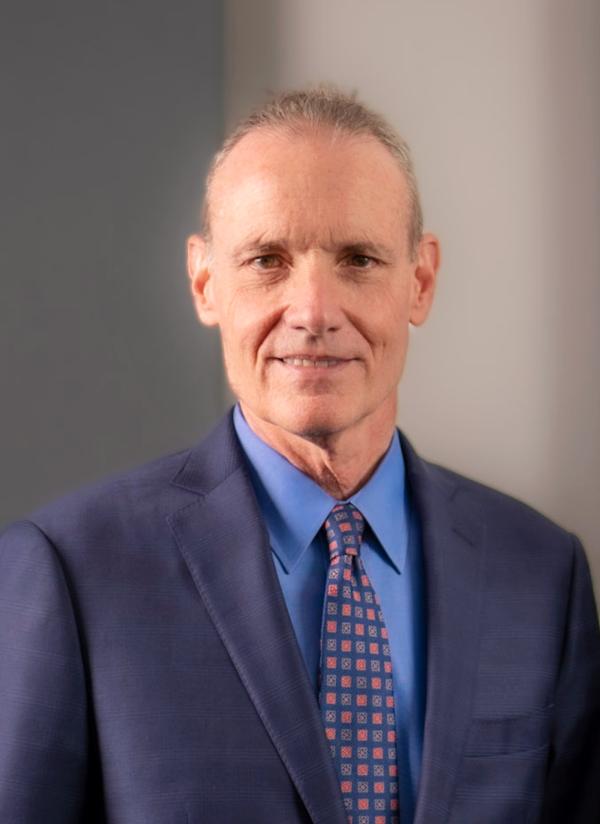By William (Bill) J. Kelly, CAIA, the President & CEO of the CAIA Association.
Many will remember a certain feeling of horror and accompanying nightmares that defined The Exorcist when it was released 50 years ago. Many will also remember the line, but not the actress, whose famous quote is the source for the title of this essay. It was Vasiliki Maliaros who played the role of Maria Karas, mother of Fr. Damien (“Dimmy”) Karas. She was discovered as an actress at the age of 88, played this one role, and sadly died before the movie was released. Her famous line, however, lives in infamy where she plaintively asks Dimmy why there had been such a fundamental breakdown in trust, from someone she so deeply loved and relied upon.
Trust can be earned from someone we love, or bestowed upon those we expect to know more about a particular subject matter. We trust the doctor who gives us medical advice, the accountant who keeps us in the good graces of the taxing authority, and the rule of law that keeps us out of prison. We want to trust the fiduciary too, because we need their advice in a field where success can be imprecise, and at times fleeting, especially in the short term.
Said fiduciary is often an asset manager, or a GP in the private structure parlance, and it seems like the former all want to become the latter as the retail share of the global AUM pie crosses the 50% mark, while democratization is just getting warmed up. This same article from the World Economic Forum talks about trust being a two-way street, and the siren song of the 60/40 being dead is not helpful to that end. It is more akin to fearmongering aimed at the most vulnerable (especially coming off 2022), and there is almost always a very high correlation between this GP-led rhetoric, and the high(er) margin product they hope to sell.
This demonization of this ‘old way’ of investing was just as topical at the iConnections Global Alts 2023 conference last week in Miami, with some of the biggest asset managers/GPs in our industry touting it with the greatest of conviction, and confliction too. What then should the narrative be?
Why not meet the client where their portfolio is with language and an approach that they can understand? Let’s start with the 60% equity exposure. The investor mostly understands equity risk premia is more volatile than bonds, but over time has shown substantially higher returns. That 60% allocation is not dead, rather there is a broader aperture of where they might find it— from the good old-fashioned public equity markets, equity hedging products which might limit volatility or drawdown risks, option-based exposure (via an exchange or structured product), or within the private markets. In the case of this latter category of potential equity exposure, it’s not about capturing an illiquidity premium or investing like Yale’s Endowment Model (utter nonsense, and incomprehensible to the average investor!), but ALL about the true home for most of today’s value creation.
A recent report from Hamilton Lane indicates that just under 90% of all US companies with annual revenues in excess of $100M are private. This same point was very well made by AJ Scaramucci during his panel at iConnections, which went something like this: Amazon was a private company for less than two years and upon public float, every $1 invested at IPO grew by 110,000% as of the end of 2022. Uber came into being many years later when the PE market was far more flush, and they grew as a private company for about a decade without any need for retail capital. When the public investor finally got access at IPO, they saw every $1 invested shrink by 25% as of the end of 2022. Certainly, a lot has changed in the public and private markets since the GFC and the phenomena around this secular shift in capital formation and value creation is a very important part of the value proposition.
As for the 40%, the investor is thinking mostly about yield. It was not that many years ago when said yield came from issuers like Uncle Sam (or his sovereign kin), corporate issuers like post-IPO Amazon and Uber, or for the more risk-seeking, high-yield tenders from the fallen angels. Since the GFC, the banks have largely scaled back or ended many parts of their lending book, and the private credit market stepped in to fill this void with now over $1T of issuance and explosive growth that is expected to continue. Due diligence clearly matters here too, but often the borrower can be positioned reasonably high in the capital stack, with both an adjustable coupon and solid collateral protections. Yield within this 40% sleeve can also come from investments in real estate, infrastructure, and even emerging managers investing in areas like cannabis, wine, or art.
As we think about the options available to the 60/40 investor, they have never been in such a great place when it comes to intra-diversification within those two buckets. EVERY new holding today is an alternative to how the portfolio was positioned yesterday, and almost every one of these new holdings will take on many of the traits or characteristics found in either the 60-bucket or the 40-bucket. Yet too many describe an entirely new third bucket called ‘alternatives’ with prescriptive top-down weights and an admonishment that you will be ‘dead’ if you don’t take this approach.
Why don’t we agree to keep it simple and not forsake the Maria Karas’s of the investment world? They don’t want, nor need, an exorcism of any part of their current portfolio. Instead, they want and need to trust us and not be afraid. Let’s help them to understand what they might need and promise not to sell them what they think they want, as that is how we establish trust. If they can’t tolerate illiquidity, don’t understand (wide) performance dispersion, or have no base-level understanding of the difference between cash-on-cash return vs IRR (which can’t be eaten!), the 60/40 should not only not be vilified, it should be the default portfolio of choice.
If you are looking for a moral to this narrative, the referenced movie delivers this quote in an exchange between the two priests contemplating the exorcism: “God never talks. But the devil keeps advertising. The devil does a lot of commercials.” What’s in your culture and how do you build trust?
Seek education, diversity of both your portfolio and people, and know your risk tolerance. Investing is for the long term.
About the Author:
William (Bill) J. Kelly, CAIA is the President & CEO of the CAIA Association. Bill has been a frequent industry speaker, writer, and commentator on alternative investment topics around the world since taking the leadership role at the CAIA Association in January 2014.

Previously, Bill was the CEO of Boston Partners and one of seven founding partners of the predecessor firm, Boston Partners Asset Management which, prior to a majority interest being sold to Robeco Group in Rotterdam in 2002, was an employee-owned firm. Bill’s career in the institutional asset management space spans over 30 years where he gained extensive managerial experience through successive CFO, COO and CEO roles. In addition to his current role, Bill is a tireless advocate for shareholder protection and investor education and is currently the Chairman and lead independent director for the Boston Partners Trust Company. He has previously served as an independent director and audit committee chair for ’40 Act Mutual Funds and other financial services firms. He is also currently an Advisory Board Member of the Certified Investment Fund Director Institute which strives to bring the highest levels of professionalism and governance to independent fund directors around the world. A member of the board of the CAIA Association, Bill also represents CAIA in similar capacities via their global partnerships with other associations and global regulators. Bill began his career as an accountant with PwC and is a designated Audit Committee Financial Expert in accordance with SEC rules. Follow Bill Kelly on Twitter @CAIA_BillKelly




